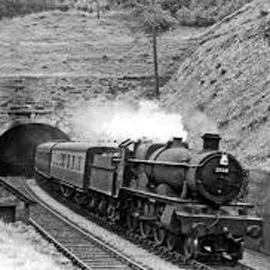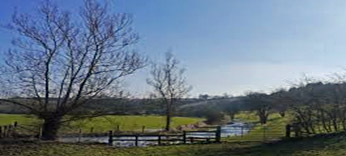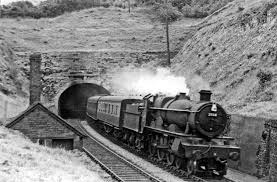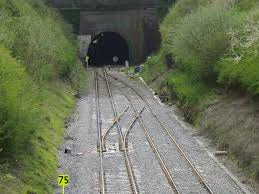A history of the Golden Valley Line
Posted: 25 January 2016 | | No comments yet
In a blog for Global Railway Review, Daniel Davis delves into the history of the Swindon to Gloucester route known as the ‘ Golden Valley Line ’ As I travel into work on the ‘Golden Valley Line’ between Standish and Swindon I look out of the window at one of the most pleasant views of Britain, […]


In a blog for Global Railway Review, Daniel Davis delves into the history of the Swindon to Gloucester route known as the ‘ Golden Valley Line ’
As I travel into work on the ‘Golden Valley Line’ between Standish and Swindon I look out of the window at one of the most pleasant views of Britain, that I believe no matter what time of the year, summer, autumn or winter, delights everyone. HRH Princess Anne officially opened the redoubled track between Swindon and Kemble on the 17th of October 2014 and it is therefore a real pleasure for me to provide the reader with some historical background on this line that was partially singled as from 30.06.68 as Stage 7 of the Swindon MAS scheme, also for obscure reasons of “economy.” Which course of action left South Wales without a capable rail connection with London in case the Severn Tunnel was out of use, as the alternative of the Severn railway bridge between Lydney and Sharpness was demolished in 1968 after partially collapsing following a serious shipping accident in 1960.
The popular name of the line goes back to the 23rd of June 1909, when King Edward VII travelled from Paddington to Gloucester with Queen Alexandra. Delighted with the view from Sapperton West Tunnel portal she coined the name; the Golden Valley Line. Present day Royals also have homes in the area, incidentally, Prince Charles and Princess Anne use the line and enjoyed the views between Swindon and Standish Junction.


Did you know that whenever a Royal Train was to travel between Kemble and Cheltenham the rule book stated that “A permanent way man provided with hand signals and detonators must be stationed at each end of the Kemble and Sapperton Tunnels at least one hour before the royal train passes in order to prevent any unauthorised person being on the railway in or near the tunnels and must remain in place until the train has passed. The line is to be inspected through the tunnel after the previous train and before the Royal Train. Within Sapperton Long tunnel a man must be stationed every 220 yards through the tunnel, furthermore a man must be stood at the top of the tunnel at either end at least One hour before the Royal Train arrived”.


So where did it all begin…
.. The line was originally built as the Cheltenham and Great Western Union Railway in the 1840s. It branched off the Great Western Main Line at Swindon and (after going through the Sapperton railway tunnel and down the Golden Valley to Stroud), joined the ex- Midland Bristol Temple Meads to Birmingham New Street main line at Standish Junction just North of Stonehouse. Between Standish junction and Cheltenham this line was of four-track configuration, two GWR and two LMS. At present the line is double track using the former LMS Down track and the former GWR Up track, at present still carrying the ex-Midland style Up and Down configuration. This also explains the generous six foot between the tracks, incidentally, and remains of the abandoned two tracks occasionally can be spotted. The Golden Valley line dates back to the very early days of railway development in the 19th century. The first section, from Cheltenham to Gloucester, was opened in 1840, followed soon by the Swindon Junction to Cirencester and Tetbury via Kemble line which opened in 1841. After opening the completed line from Swindon to Standish in 1845, Kemble became the junction for the Cirencester and Tetbury branch in Isambard Kingdom Brunel’s GWR railway line from Swindon Westward, Unfortunately the line from Kemble to Cirencester closed in 1965, the Beeching years. However, the branch platform and its track can still be seen at the back of Kemble station today. The village of Kemble is also near the route of the Thames and Severn Canal and the Thames National Trail. This trail follows the Railway line and provides an opportunity to see the portals of what was in its day the longest canal tunnel (at Sapperton) in the world. It succumbed, as so many canals did, to the speed of the railway. Occasionally, however, there apparently still are opportunities to sail a boat through this canal tunnel. Don’t expect much of the views.
At one time there were twenty stations and halts between Cheltenham, at the northern end of the GWR line, and its terminus at Swindon. Now only six remain open (Cheltenham, Gloucester, Stonehouse, Stroud, Kemble and Swindon). At Cheltenham the GWR line left the Midland line and eventually terminated at Birmingham Moor Street station with GWR connections as far as Chester and Birkenhead. Birmingham Moor Street, incidentally, recently has been fully brought back in service as well and part of the old GWR line is in use by a steam tourist line.
In 1968, the hitherto double-track Golden Valley line was singled between Swindon and Kemble by British Rail. The plan had in fact been to single the entire line between Swindon and Stonehouse but protests as well as increasing awareness of the dubious economies led to the abandonment of the project once it had reached Kemble, leaving the section from Kemble Northward to Stonehouse still as twin track but with very little in the way of signalling. Having been made aware of the potential isolation of South Wales after serious problems with the Severn railway tunnel occurred around the turn of the 21st century, the Coalition government that took office in 2010 revived the moribund proposal to upgrade the line to main line standards again and announced in 2011 that the project to re-double and re-signal the line could go ahead. Work on the £45m project started in July 2013 and was expected to be completed by Easter 2014. However, on 07 February 2014 Network Rail announced that completion of the project would be put back until August 2014 because “The very high volume of works during Easter nationally, coupled with ongoing remedial work from flooding (Dawlish) earlier this year, means our engineering resources will now be operating at full capacity during one of the busiest phases of the Swindon to Kemble redoubling scheme.
“To minimise risk to the work, and avoid the possibility of unnecessary inconvenience to customers, we are now working towards completing the scheme between Swindon and Kemble by August 2014 rather than Easter as originally planned.” {Network Rail}
Anecdotal evidence suggests that the local residents are looking forward to a considerable hike in property values as the increased rail traffic that will be enabled by the re-doubling of the line will make the all-important London Paddington destination even more accessible.


I believe that “Us at Team Central” are lucky to be working a line of such trenchant history and beauty. So next time your either working as a Train Manager, behind the Buffet or Driving over the route, give a quick thought to what you have just read and don’t forget who once were travelling along this route whilst you never know could be travelling on your train now!
Produced by Daniel Davis, Train Driver, Gloucester Depot
|
Daniel Foster Davis has over 22 years railway experience, with an exceptional safety of the line record. If you’d like to hear how Daniel reduces the risk of any operational incidence, please contact him at [email protected]. |


